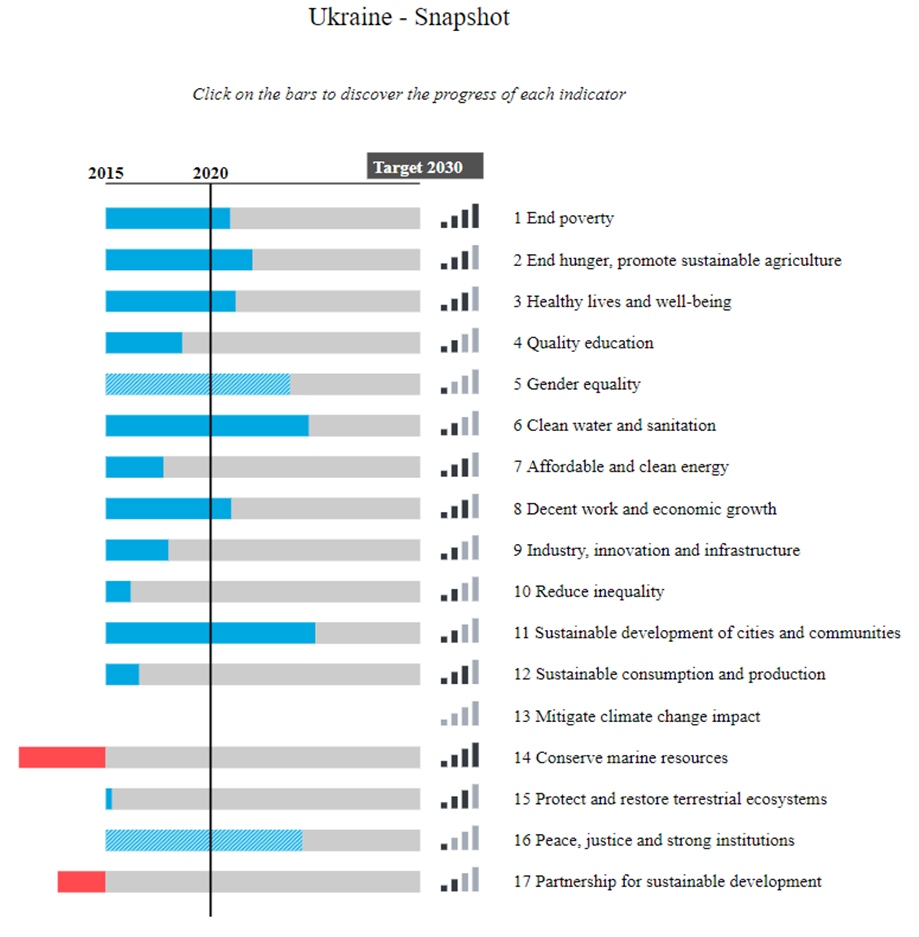Education Data in Displacement Context: What Ukraine Does and Has to Do to Collect Data on IDPs?
This Blog Post is contributed by Olena Shevtsova, Deputy Director of Administrative Directorate, State Statistics Service of Ukraine and Anastasiia Fitisova, Durable Solutions Project Coordinator, Danish Refugee Council in Ukraine as part of the NORRAG Blog Series on Missing Education Data which aims to further explore six themes that emerged from the inaugural summit and its accompanying papers and expert consultations. This blog entry was submitted to NORRAG on 8 February 2022, eight years after the February 2014 Annexation of Crimea by Russia and three weeks prior to Russia’s February 2022 invasion of Ukraine and the resulting war. The text is a heart-breaking testament to how war can profoundly disrupt the building blocks on which organized society rests. In this case the disruption and loss is of the tireless work of Ukrainian experts working within governmental and non-governmental institutions to improve integration data for displaced persons, including educational integration data. It also throws in a harsh light one corner of what will need to be rebuilt and on what a scale in the education system. These efforts were being described for us eight years to the month after Ukrainians began to be internally displaced due to the 2014 annexation of Crimea and the conflict in eastern part of Ukraine. In solidarity with our colleagues in Ukraine, we are publishing this blog as a testimonial to a world suspended and encourage our readers to extend their support to Ukrainians and the over 80 million displaced persons from countries around the globe in any way that they are able.
In the eighth year of the displacement history of Ukraine, there is a widespread belief that internally displaced persons (IDPs) have mainly overcome challenges in their access to education. The monitoring studies show that this sphere is less problematic for IDPs than others (such as housing or employment), particularly when it concerns access to school education [1]. The problems with education facilities and safety remain at the territories near the Contact Line. However, for other territories, the key remaining issues for IDPs are associated with their access to tertiary education.
Despite this widespread belief on the IDPs success in the education sphere, there is very little quantitative evidence that confirms this. For the most part, the conviction is supported by arguments from the legislation side: most of the barriers to education due to legislative and administrative constraints have been reduced in recent years. However, when it comes to the questions of how this is empirically confirmed, it turns out that even basic data such as the IDPs’ school attendance rates are not available.
This situation with data hinders the Government’s action towards improving the IDPs access to education. In particular, in October 2021, the Government of Ukraine approved the new National IDPs Integration Strategy covering the period of 2021-2024 [2]. Among the Government’s priorities in the education sphere were establishing the mechanisms for recognition of diplomas issued in non-Government controlled territories and several activities to support IDPs entrants to the Ukrainian universities (such as information campaigns as well as loans and other support for students admitted to universities from the non-Government controlled territories). Though the strategy includes an operational plan with more concrete activities and targets, there are no quantitative indicators established to monitor the implementation progress for these activities. The main reason is the lack of data.
State IDPs Integration Monitoring System
Since mid-2020, Danish Refugee Council (DRC) has supported MinReintegration in developing criteria and indicators for the state monitoring system of IDPs integration [1]. The data collected through such monitoring could guide the government’s priorities on IDPs and support it in planning the respective programs and budget allocations. For the first time, the Government of Ukraine documented the intention to collect data on IDPs integration back in 2015. It was a target in the first national strategic document defining the programmatic activities towards IDPs [3]. A lot of work is now being done to materialize this very important endeavour that remains an initiative pending implementation.
At the end of 2021, based on two pieces of background research [4, 5], the engagement of international expertise, and comprehensive consultative process with the key national stakeholders and IDPs themselves, DRC developed and transferred to MinReintegration the guidance document, outlining the measures for IDPs integration [6]. The measurement framework aimed to monitor the progress against ten integration criteria. Each criterion was broken down into two to three measurable indicators and envisioned the necessity to establish achievable target values. It was assumed that full IDP integration would be achieved as soon as all criteria were fulfilled. The approach to data collection was one of the most debatable parts of the consultative process at the national level, revolving mainly around whether the IDPs registry can be used for such needs or whether it is better to use sample surveys.
Another important issue is to select a sound methodology to track the progress of the integration. We think that it might be expedient to explore the remodelling of the UN ESCAP SDG progress assessment methodology for IDP integration measurement purposes. Firstly, it proved its flexibility when applied to the nationalized SDG context. Secondly, it will show the progress a country has made in this area towards targets since the chosen year as a share of the total progress it needs to make. Moreover, it will calculate the expected distance from targets in the final year, judging from a country’s past progress. Thus, two major questions will be answered – how much progress was made since a starting year and how likely is it that the targets will be achieved by a final year.
Missing Education Data
The discussions on the approaches to data collection include indicators on IDPs access to education. Though the consultation process confirmed that IDPs had overcome most of the challenges in access to education, it was decided to keep the criterion on IDPs access to education in the measure to make sure that this statement is informed by evidence. The criterion was worded as ‘All IDPs have access to education on par with the non-displaced population’ and was measured against two indicators. One ‘objective’ indicator on the IDPs schools’ attendance and a subjective indicator on the different types of obstacles arising in education institutions due to displacement (Table 1). After conducting the first round of the state monitoring, the indicator on obstacles could be further sub-divided into more indicators conceptualising particular obstacles. Besides these indicators, the criterion measuring IDPs access to the labour market also envisioned one education-related indicator aligned with SDG indicators: ‘Percentage of IDP youth not in employment, education, or professional training (NEET) aged 15–24’. The common problem for all the listed education-related indicators was the lack of available data.
Table 1. The measure for the State IDPs Integration Monitoring System. Criterion: All IDPs have access to education services (on a par with the non-displaced population)
|
Indicator |
Data Source |
Target |
|
Percentage of IDP households who report obstacles in accessing education services in public institutions in the last 12 months due to displacement (by type of obstacles); |
IDPs Database/IDP Survey |
0% |
|
Percentage of school-age IDP population not attending school; |
IDPs Database and Ministry of Education |
0% |
|
Education-Related Sustainable Development Goals (SDGs) Indicator: Percentage of IDP youth not in employment, education, or professional training (NEET) aged 15–24 |
IDPs Database/IDP survey
or Labour Force Survey |
Percentage of NEET IDP youth is not higher than NEET non-IDP youth |
Key Reasons for the Lack of Education Data
When the consultative process to refine criteria and indicators had just begun, a series of interviews with government officials was conducted. One such interview was with an official of the Ministry of Education and Science (hereinafter: MinEd). In his opinion, the problem hindering the collection of IDPs data on education is the lack of well-established interaction between various state registries. For example, MinEd maintains its databases and registries. However, not all of these data systems can directly collect data on the displacement status from IDPs.
For example, according to Ukrainian laws, IDPs are not obliged to provide an IDP certificate when their children enter schools. It may only be required if the child is eligible for some unique benefits for IDPs provided through schools. For the statistics on the school attendance rate, it means that the data on the number of IDPs attending schools is not available yet at the local level. So, this data cannot be then generalised into the nationwide indicators on IDPs school attendance. In this situation, the only way to compile these statistics is to establish the interaction between the data systems of MinEd and the IDPs Registry. Only this way will the MinEd will be able to define IDPs among schools’ students and thus calculate the attendance rate for IDPs.
The situation with data on students of tertiary education institutions is different. According to the law, the applicants and students of the universities and colleges must provide an IDP certificate at the stage of admission. Considering that this data is collected by universities, MinEd has generalised information on the number of these IDP students. Problems begin to arise when there is a need for more detailed data. For example, both state and humanitarian actors in Ukraine are concerned about the situation of students entering Ukrainian universities from non-Government controlled territories. In particular, such students might have more socio-economic vulnerabilities and therefore need additional support to succeed in their studies. The problem is that, at the moment, only a full-fledged sample-based study of this group could provide evidence on this issue. Meanwhile, establishing the interaction of the MinEd’s databases with other state data systems could provide at least basic data on the socioeconomic status of IDP students.
So, the key reason for the lack of available administrative data disaggregated by displacement is an absence of linkages and interaction between different state registries. The reasons for the insufficient IDPs data based on the regular state sample surveys can be exemplified through the education indicators aligned with SDGs.
SDG National Indicator Framework and IDPs data
In 2017, the Government of Ukraine adopted the National Baseline Report, where global SDGs targets were nationalized [7]. In 2019, following the President Decree on SDGs [8], the Cabinet of the Ministers of Ukraine approved the nationalized list of SDG indicators and empowered the State Statistics Service of Ukraine (hereinafter: Statistics Service) with ensuring collection and making these data public, as well as with coordinating activities to develop metadata under the indicators [9]. In 2020, the Statistics Service jointly with VoxUkraine and supported by UNDP Ukraine, piloted the measurement of SDG progress in Ukraine using the UN ESCAP methodology and based on the SDGs Voluntary National Review. The progress was measured for 110 out of 183 national indicators. For example, Goal 4 ‘Quality Education’ was considered underachieved, as of 2020 (Figure 1). The progress was measured against six indicators, three of which are overachieved in 2020 while the other three are regressing since 2015 [10].

Figure 1. Assessment of the progress towards achieving the SDGs in Ukraine (by the UNESCAP methodology)
There are twelve SDG indicators recommended to be disaggregated by forced displacement category according to the priority policy area. However, there are different constraints for introducing disaggregation by forced displacement. For example, the technical constraint for SDG indicators collected via the state surveys (such as ‘Labour Force Survey’ or ‘Household Living Conditions Survey’) is related to the design of samples. Neither the sample structure, nor the sample size of these regular state surveys could ensure that the data on IDPs would be representative. The territorial distribution of IDPs is not similar to the whole Ukrainian population. Therefore, there is a risk that a sufficient number of IDPs will not be included in the sample. In order to start collecting the data on IDPs via the regular state surveys, the current samples have to be revised.
What is next?
At the beginning of 2021, the Working Group on International Recommendations on IDP Statistics in Ukraine was established with joint coordination by the State Statistics Service of Ukraine and the International Organization for Migration. The main objective of this Working Group is to develop the Roadmap for improving IDP statistics in Ukraine and harmonising it with international standards. The work is focused on the different data sources: registries, sample surveys, big data, as well as legislation, statistical concepts, coordination mechanism development etc. We hope that the results of this Working Group will be fruitful for the education statistics as well.
According to the legislation, IDPs shall not have any barriers in terms of their access to public goods and services. Therefore, state bodies usually are not authorised to collect data on displacement during the provision of any services to IDPs for fear of discrimination. Therefore, the only way to start collecting more administrative data on IDPs is to establish interaction between different state registries. The establishment of interaction between different state registries is a long process, which is already underway in Ukraine. There are also concerns about the accuracy of data in some registries which may lead to mistakes.
The state sample surveys could be useful for key indicators, which are already collected for the whole population of Ukraine. Such surveys require revised sample designs to collect representative data on IDPs. The need for more IDPs data requires full-fledged targeted IDPs surveys, which is a quite expensive initiative and requires additional capacity building for the Government of Ukraine. Another important IDP data source could be the census planned for 2023 in Ukraine. Including the respective questions for IDPs identification in its questionnaire is significant.
 Olena Shevtsova (EGRIS Steering Committee member) – Since July 2019 – Deputy Director of Administrative Directorate – Head of Organizational Support Department at the State Statistics Service of Ukraine dealing with reform initiatives, projects and partnerships. Coordinator from the State Statistics Service of Ukraine of the Working Group for Development of the Roadmap for Implementation of IRIS in Ukraine. Participant of work upon the development of the International Recommendations on the Statelessness Statistics. In previous capacity as Advisor to the State Fund for Support of Youth Housing Construction was dealing with housing projects for IDPs development and promotion.
Olena Shevtsova (EGRIS Steering Committee member) – Since July 2019 – Deputy Director of Administrative Directorate – Head of Organizational Support Department at the State Statistics Service of Ukraine dealing with reform initiatives, projects and partnerships. Coordinator from the State Statistics Service of Ukraine of the Working Group for Development of the Roadmap for Implementation of IRIS in Ukraine. Participant of work upon the development of the International Recommendations on the Statelessness Statistics. In previous capacity as Advisor to the State Fund for Support of Youth Housing Construction was dealing with housing projects for IDPs development and promotion.
 Anastasiia Fitisova is a Durable Solutions Project Coordinator in Representation of the Danish Refugee Council in Ukraine (DRC Ukraine). A Master of Sociology, she first started working on data and policy analysis in one of the Ukrainian think tanks in 2015. She has been specialised in internal displacement and international migration, and then working as a consultant on data and policy analysis in different humanitarian organisations. Since 2020, she has been working in DRC Ukraine.
Anastasiia Fitisova is a Durable Solutions Project Coordinator in Representation of the Danish Refugee Council in Ukraine (DRC Ukraine). A Master of Sociology, she first started working on data and policy analysis in one of the Ukrainian think tanks in 2015. She has been specialised in internal displacement and international migration, and then working as a consultant on data and policy analysis in different humanitarian organisations. Since 2020, she has been working in DRC Ukraine.
References
1 The National Monitoring System Reports on the Situation of IDPs in Ukraine: Round 1 – 17 / IOM (2016–2020) [EN/UKR] – URL: https://www.iom.org.ua/en/periodicals
2 The Strategy for the Integration of IDPs and Implementation of Mid-Term Decisions on Internal Displacement until 2024 [UKR]– URL: https://zakon.rada.gov.ua/laws/show/1364-2021-%D1%80#Text
3 The comprehensive National Programme for Support, Social Adaptation and Reintegration of Internally Displaced Citizens of Ukraine from the Temporarily Occupied Territory of Ukraine for the period until 2017” [UKR]– URL: https://zakon.rada.gov.ua/laws/show/1094-2015-%D0%BF#n10
4 Desk Research: Best International Practices on IDPs Integration Criteria and Indicators 2020 Case Studies: Ukraine, Azerbaijan, Georgia and Serbia [EN/UKR]: https://reliefweb.int/report/ukraine/desk-research-best-international-practices-idps-integration-criteria-and-indicators
5 Thematic Consultation Meetings with IDPs, their Vulnerable Host Communities, and Key Stakeholders in Ukraine on IDPs Integration Criteria and Indicators [EN/UKR]: https://reliefweb.int/report/ukraine/thematic-consultation-meetings-idps-their-vulnerable-host-communities-and-key
6 Concept Paper on IDPs Integration Criteria. Framework for the State Monitoring of IDPs Integration into Host Territorial Communities of Ukraine. Guidance Document [EN/UKR] – DRC, Ukraine, 2021.
7 Sustainable Development Goals: 2017 Baseline National Report [EN/UKR] – URL: https://www.ua.undp.org/content/ukraine/en/home/library/sustainable-development-report/sustainable-development-goals–2017-basseline-national-report.html
8 Decree No 722/2019 of the President of Ukraine dated September 30, 2019 on Sustainable Development Goals of Ukraine for the period till 2030 [UKR] – URL: https://zakon.rada.gov.ua/laws/show/722/2019#Text
9 Regulation # 686-p of the Cabinet of Ministers of Ukraine dated August 21, 2019 on the issue concerning data collection to monitor the SDGs implementation [UKR]– URL: https://www.kmu.gov.ua/npas/pitannya-zboru-danih-dlya-monitorin-686r
10 Assessment of the progress towards achieving the SDGs in Ukraine (by the UNESCAP methodology) [EN]– URL: Progress Assessment Graphs (ukrstat.gov.ua)
—–
[1] These activities were carried out within the project ‘IDPs Integration Support Initiative in Ukraine’ implemented by DRC Ukraine with the financial support of the USAID’s project ‘Democratic Governance East Activity’

